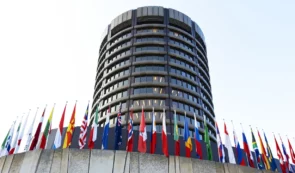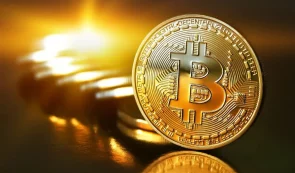What is Quant
Quant Network is а software that aims to connect different DLT networks and enables organizations and governments to connect their products to different blockchains and enable data transfer.
Gilbert Verdian is the CEO of Quant Network. At the same time, Jean-Paul de Jong and Colin Patterson are the other key figures in the project in their roles as chief architect and chief technology officer, respectively.
In April 2018, an ICO was held, raising $11 million.
How does Quant work?
The Overledger DLT Gateway is the foundational element of Quant’s network.
Overledger is not a blockchain but an application programming interface (API) gateway connecting blockchain networks. Overledger allows organizations to efficiently share information with other networks.
Developers can use the Overledger operating system to run decentralized applications using multiple blockchains (mDApps). Launching a mDApp allows developers to create applications that are compatible with existing, highly adopted blockchains.
QNT is used to pay for absolutely all fees within the ecosystem. QNT tokens are used to pay the licensing fees required to access Overledger. Also, in order to create or use a mDApp it must have QNT tokens.
Developers can launch their own blockchain tokens using Quant Network’s QRC-20 token standard, which is similar to Ethereum’s ERC-20 standard.
What is the purpose of Quant?
While working in the healthcare sector, Gilbert Verdian got the idea to create Overledger/Quant when he identified the key role of interoperability to provide coverage for patients registered in different networks and included in multiple datasets.
The Verdian-led team set about solving a number of problems to bring a future concept called the “Internet of Trust” to life.
It is envisioned that Overledger provides each network used for a particular purpose a gateway to all other blockchains while maintaining communication between each application within the ecosystem with the desired blockchain.
Overledger hopes to assist in developing tailored solutions for specific sectors, with its architecture serving as a shortcut to reducing the high cost of doing so and removing the requirement to own complex infrastructure spanning multiple circuits.
How does Overledger work?
The architecture that enables interoperability support and creates the prerequisites for scaling is actually inspired by the TCP/IP models used in communications networks.
The developers decided that the best structure for organizing individual tasks on the network was to divide it into different layers:
- Transaction Layer: This layer stores transaction data – all the operations that are needed to achieve consensus across multiple blockchains. Yet the scope of transactions performed in a particular blockchain may not be valid in other ledgers. This layer is therefore composed of both diverse and isolated ledgers.
- Messaging layer: this layer deals with all the information extracted from the ledgers that are considered relevant. These are smart contract data, metadata, and transaction data.
- Filtering and Sorting Layer: This layer also handles messages, especially those extracted and compiled from transaction information. Messages referenced in the transaction by a hash that is exchanged off-chain are subjected to ordering and filtering. Also, this layer establishes connections between messages originating from the message exchange layer. This layer also validates messages outside the metadata chain. The validation mechanism verifies application requirements that can be defined on the transaction data.
- Application layer: Messages that are considered valid on the basis of having the required format and signatures can update the state of the corresponding application. Different applications can share identical messages or reference messages associated with other applications.
Quant App Store
Quant Network demonstrated its ability to read and track transactions across multiple ledgers, which initially included Bitcoin, Ethereum, and Ripple, with the promise of adding support for more of them as development progressed. Similarly, the same architecture that supports MApps should allow the Quant team to begin work on the Quant App Store as one of several revenue streams within its ecosystem.
The App Store in question aims to provide the following functionality:
- Developers can build and release MApps.
- Apps can have zero usage and transaction fees. Other options include one-time transaction fees, app usage, and an optional monthly subscription model.
In all cases, customers who wish to use it will be required to hold a predetermined number of QNT tokens in order to gain access to the platform.
Quant SAAS
In addition to the App Store, Quant also plans to launch its own software as a Service (SaaS) for enterprise and middleware applications. These will include solutions tailored to the needs of individual sectors based on the requirements of different industries.



